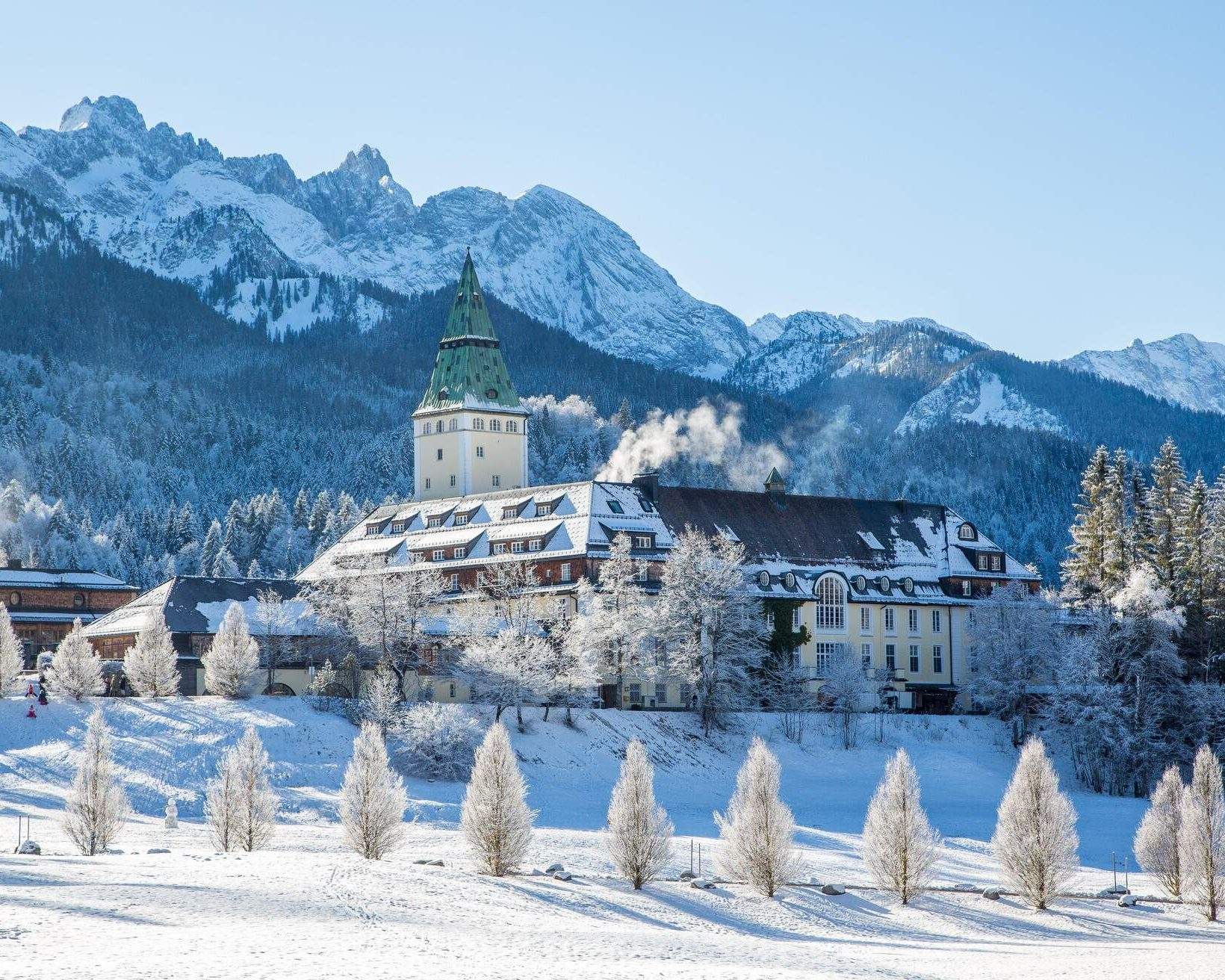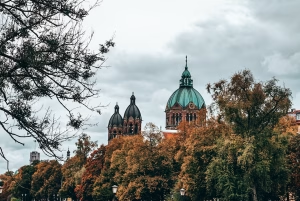Whether you’re planning to explore historic cities draped in snow or hit the slopes in the Bavarian Alps, this comprehensive guide will help you maximize your German winter adventure.
Weather in Germany in Winter
The winter climate in Germany varies significantly by region, with the most severe conditions typically occurring from December through February. Here’s a detailed overview of what to expect:
| Weather Element | Details |
| Temperature (°C) | High: 3°C to 5°C
Low: -2°C to -8°C Average: 0°C |
| Snowfall | Regular in southern and central regions; occasional in northern areas |
| Daylight Hours | 8-9 hours per day |
| Humidity | 75-85% |
| Precipitation | Mix of rain and snow; 40-60mm monthly |
Why Visit Germany in Winter?
While many travelers flock to Germany during summer, winter unveils a different side of this fascinating country. From cost savings to unique seasonal experiences, the colder months offer compelling reasons to explore Germany when it’s transformed by frost and snow.
Magical Christmas Markets
One of the primary draws of winter travel to Germany is its world-famous Christmas markets. Cities like Nuremberg, Dresden, and Munich host some of Europe’s most enchanting markets, where centuries-old traditions come alive with mulled wine, handcrafted ornaments, and festive treats.

Lower Travel Costs
Winter is considered the off-season (except during Christmas), offering significant savings on accommodations and flights. Many hotels reduce their rates by 20-30% compared to peak summer prices.
Fewer Crowds
Popular attractions like Neuschwanstein Castle and Berlin’s Museum Island are less crowded during winter months, allowing for a more intimate experience and better photo opportunities.
Winter Sports Paradise

The Bavarian Alps transform into a skiing and snowboarding haven from mid-December through early April, offering over 100 ski areas across the region. The crown jewel is Garmisch-Partenkirchen, home to Germany’s highest peak, Zugspitze, featuring 40km of pristine slopes and Olympic-standard facilities.
Nearby, Oberstdorf caters to families with 130km of varied terrain and excellent ski schools, while Berchtesgaden charms visitors with six distinct ski areas set against spectacular Alpine views. Beyond skiing, the region offers extensive cross-country trails, snowboarding parks, winter hiking paths, and toboggan runs, all supported by modern lift systems and high-quality rental facilities.
With reliable snow conditions, multilingual instructors, and easy access from major cities, the Bavarian Alps provide a perfect winter sports escape for both beginners and experienced enthusiasts.
If you’re looking for information about German visa for Indians, check out this blog post.
What to Look Out for in Germany during Winter
While winter in Germany offers magical experiences, it also comes with its own set of challenges. Being aware of these potential hurdles will help you plan more effectively and ensure your winter adventure goes smoothly.
Limited Daylight Hours
With sunset as early as 4 PM in December, it’s essential to plan outdoor activities accordingly to make the most of daylight hours.
Weather-Related Transport Delays
Snow and ice can affect public transportation schedules, especially in rural areas. Always check weather forecasts and allow extra time for travel.
Seasonal Closures
Some outdoor attractions and beer gardens may have limited hours or close entirely during winter months.
Top Things to Do in Winter
Winter in Germany isn’t just about staying indoors – it’s a season filled with unique activities and experiences you won’t find any other time of year. From snow-covered castles to cozy cultural venues, here’s how to make the most of your winter visit.
Visit Neuschwanstein Castle

Experience the fairy-tale castle surrounded by snow-covered peaks. The winter atmosphere enhances its resemblance to Disney’s inspiration.
Explore Christmas Markets

Germany’s Christmas markets transform historic city squares into magical winter wonderlands from late November through Christmas Eve. Here are the most iconic ones:
Nuremberg Christkindlesmarkt (Since 1628)

- Iconic red-and-white striped stalls
- Famous for handcrafted ornaments and traditional toys
- Known for original lebkuchen (spiced gingerbread)
- Opens with the Christkind (Christmas angel) ceremony
Dresden Striezelmarkt (Since 1434)

- Germany’s oldest Christmas market
- Home to authentic Dresden Stollen fruitcake
- Features live craft demonstrations
- Displays world’s tallest Christmas pyramid
Munich Christkindlmarkt

- Set against the Neo-Gothic New Town Hall
- 150 festive stalls
- Specializes in hand-blown glass ornaments
- Serves traditional Glühwein under a towering Christmas tree
Each market offers its own regional specialties and time-honored traditions, creating an unforgettable German Christmas experience.
Hit the Slopes in the Bavarian Alps

The Bavarian Alps boast some of Europe’s premier skiing destinations, each offering unique charm and character. Garmisch-Partenkirchen, renowned as Germany’s top ski resort and host of the 1936 Winter Olympics, features the legendary Kandahar downhill run and 40 km of meticulously groomed slopes.
The crown jewel is the Zugspitze, Germany’s highest peak at 2,962 meters, where reliable snow conditions extend the skiing season from November to May, providing spectacular glacier skiing and breathtaking views across four countries.
For families and beginners, Oberstdorf is ideal with its gentle slopes and comprehensive ski schools offering instruction in multiple languages. The resort features 130 km of varied terrain, including practice zones and wide cruising runs, along with a modern lift system that minimizes wait times. All three resorts are easily accessible by train from Munich and offer high-quality equipment rentals, alongside excellent après-ski options ranging from traditional Bavarian beer halls to cozy mountain huts serving hearty local cuisine.
Indoor Cultural Experiences
Germany’s premier cultural institutions provide perfect winter refuges for art and music lovers. Berlin’s Museum Island, a UNESCO World Heritage site, houses five world-class museums, including the Pergamon with its ancient architectural treasures and the Neues Museum, home to the famous Nefertiti bust.
Munich’s Pinakothek complex offers an impressive journey through art history, from medieval masterpieces at the Alte Pinakothek to contemporary works at the Pinakothek der Moderne, showcasing iconic works by Dürer, Rembrandt, and Van Gogh.
In Hamburg, the spectacular Elbphilharmonie, with its wave-like glass architecture, delivers outstanding acoustics and harbor views, hosting everything from classical orchestras to contemporary performers in its grand concert halls.

Thermal Spa Experience

Germany’s historic spa towns offer luxurious warmth and wellness during the cold winter months. Baden-Baden, the grand dame of German spa culture, enchants visitors with its Belle Époque Friedrichsbad, where ancient Roman bathing traditions blend with elegant 19th-century architecture across 17 stages of thermal treatments.
Wiesbaden, nicknamed the “Nice of the North,” boasts the monumental Kaiser-Friedrich-Therme, featuring hot springs that have attracted wellness seekers since Roman times, with waters rich in minerals reaching temperatures of 66°C.
In the heart of the Black Forest, Bad Wildbad’s Palais Thermal combines stunning Art Nouveau architecture with modern wellness facilities, offering seven different thermal pools and traditional therapeutic treatments perfect for soothing winter-weary muscles.
Festivals & Events in Winter
German winters come alive with festivals and celebrations that showcase the country’s rich cultural heritage. From centuries-old Christmas traditions to modern cultural events, the winter calendar is packed with memorable experiences.
Christmas Markets (Late November – December 24)

Germany’s Christmas markets magically transform historic city squares into winter wonderlands. Local artisans fill wooden stalls with handcrafted ornaments, nutcrackers, and traditional toys, while the aroma of roasted chestnuts, gingerbread, and Glühwein (mulled wine) wafts through the air.
Traditional carols from local choirs and brass bands create a festive atmosphere as craftsmen demonstrate glass-blowing and wood carving. Don’t miss regional specialties like Lebkuchen (spiced gingerbread), Stollen (fruit bread), and Bratwurst grilled over open fires.
Each market features unique attractions from vintage carousels to towering Christmas pyramids, making every visit special.
Carnival Season (January – February)

Germany’s carnival season, known regionally as Karneval, Fasching, or Fastnacht, brings vibrant celebrations nationwide. The famous Cologne Carnival, called the “fifth season,” draws over a million visitors with its spectacular parades and satirical floats.
Munich’s Fasching celebrates Bavarian traditions through masked balls and energetic dance performances. The highlight comes on Rose Monday (Rosenmontag), featuring grand parades where costumed revelers distribute sweets to excited crowds as brass bands play carnival tunes.
Each region adds its own touch, from Black Forest wooden mask parades to Rhineland comedy shows.
Berlin International Film Festival (February)

The Berlinale transforms Berlin into a global cinema celebration each February. This prestigious festival, marked by its Golden Bear award, screens over 400 international films across the city.
From glittering premieres at the Berlinale Palast to independent showings in intimate theaters, the festival makes world-class cinema accessible to everyone.
Film lovers can purchase day passes to attend screenings, join Q&A sessions with acclaimed filmmakers, and experience cutting-edge global cinema alongside industry professionals.

What to Wear in Germany during Winter
Enjoying German winter requires the right wardrobe choices. With temperatures often dropping below freezing and weather conditions varying from snow to rain, proper preparation is key to staying comfortable during your winter adventures.
Essential Winter Wear
To stay warm and comfortable during your winter adventures in Germany, pack a waterproof winter coat, thermal underlayers, and waterproof boots. Don’t forget to include a warm hat, scarf, and gloves, as well as warm, waterproof socks to keep your extremities cozy.
Layering Tips
Effective layering is essential for staying warm in winter. Start with a base layer of thermal underwear or heat-tech clothing, add a mid layer of wool sweaters or fleece for insulation, and top it off with a waterproof winter coat as your outer layer.
Complete your outfit with accessories like a warm scarf, gloves, and a hat to protect against the cold.
Why Choose OneVasco?
OneVasco makes visa applications effortless. Our expert team manages the entire process, allowing you to focus on your journey.
Enjoy stress-free travel with fast visa approvals.
- Expert and Personalized Support
- Efficient and Hassle-Free Process
- Real-Time Tracking and Updates
- Transparent Communication
- Trusted by Millions
Frequently Asked Questions
1. How cold does it get in Germany during winter?
Temperatures typically range from -8°C to 5°C, with southern regions generally colder due to higher elevation.
2. Does it snow in Germany?
Yes, particularly in southern and central regions like Munich and Frankfurt.
3. Are Christmas markets open every day?
Most operate daily from late November until December 23rd or 24th from around 10 AM to 8 or 9 PM.
4. Can you ski in Germany?
Yes, particularly in the Bavarian Alps where skiing season runs from December to March.
5. Is winter a good time to visit Germany?
Absolutely! Enjoy unique experiences like Christmas markets and winter sports while avoiding large crowds at major attractions.
6. What are the best cities to visit during German winter?
Munich, Nuremberg, and Dresden are particularly magical during this season.
7. Are museums open during winter?
Most indoor attractions maintain regular hours; however, some outdoor sites may have reduced hours or seasonal closures.
8. What is the best month to visit Germany in winter?
December is ideal for experiencing Christmas markets; January and February are perfect for winter sports enthusiasts seeking fewer tourists.





















